Giant’s Causeway in Northern Ireland is one of the most amazing natural wonders in the world. These thousands of basalt columns look absolutely otherworldly. And while they are definitely cool to look at, the science, history, and legends behind it are what truly make it worthwhile.
So before you head to this Northern Ireland natural wonder, read up on these fantastic Giant’s Causeway facts.
1. Giant’s Causeway is made of 40,000 interlocking basalt columns.
These cool columns sort of look like steps. And since there are 40,000 of them, that’s quite a lot of land to explore!
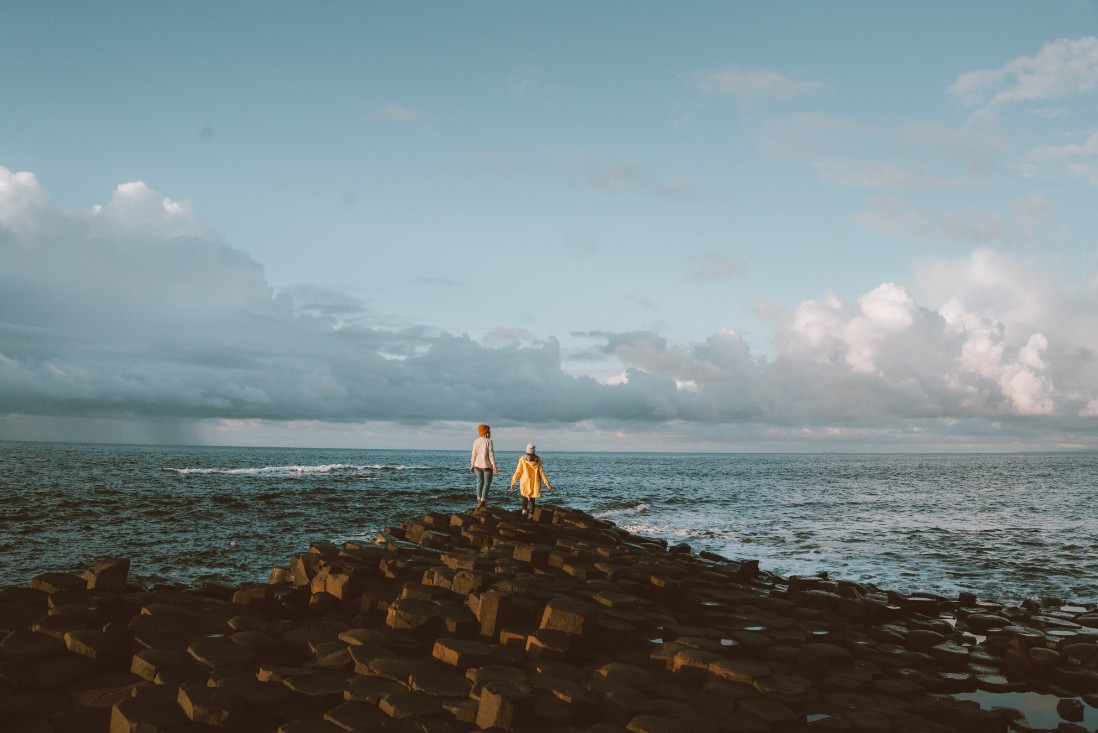
2. Each of the basalt columns has between four to eight sides.
In other words, each of the columns boasts its own unique polygon! The vast majority of the columns have five to seven sides, making them pentagons, hexagons, and heptagons.
3. Some of the tallest columns soar nearly 25 metres high!
Will you be bold enough to climb to the top? (If you are, please be careful!)
4. These basalt columns were created by the cooling and contracting of lava.
90% of the elements in lava are used to make basalt. For the science fans out there, basalt’s chemical structure is SiO2 (one silicon and two oxygen), and lava is made primarily of silicon and oxygen.
5. These basalt columns cracked to form the pentagons, hexagons, and heptagons. This occurred when the rock’s temperature was between 840 and 890 degrees Celsius.
In 2018, a team of scientists at the University of Liverpool discovered the process behind this distinctive natural landscape. In order to fully understand it, they actually had to replicate the creation of these basalt columns. And thanks to them, we now know about the absurdly high temperature needed to create Giant’s Causeway.
6. You can no longer see the volcano that created Giant’s Causeway.
Despite the fact that you can still see the 40,000 basalt columns that make up Giant’s Causeway, you can’t see the volcano that created it! Such is the consequence of natural erosion. At least we’re lucky enough to see the volcano’s wonderful natural masterpiece.
7. Geologists say that Giant’s Causeway was created between 50 million and 60 million years ago!
These unique rock formations were created during Earth’s Paleogene Period. How do we know this, you ask? Scientists use processes known as relative dating (determining how old rocks are based on the rocks around it) and absolute dating (determining how old rocks are based on the presence of radioactive isotopes) to determine the age of rocks.
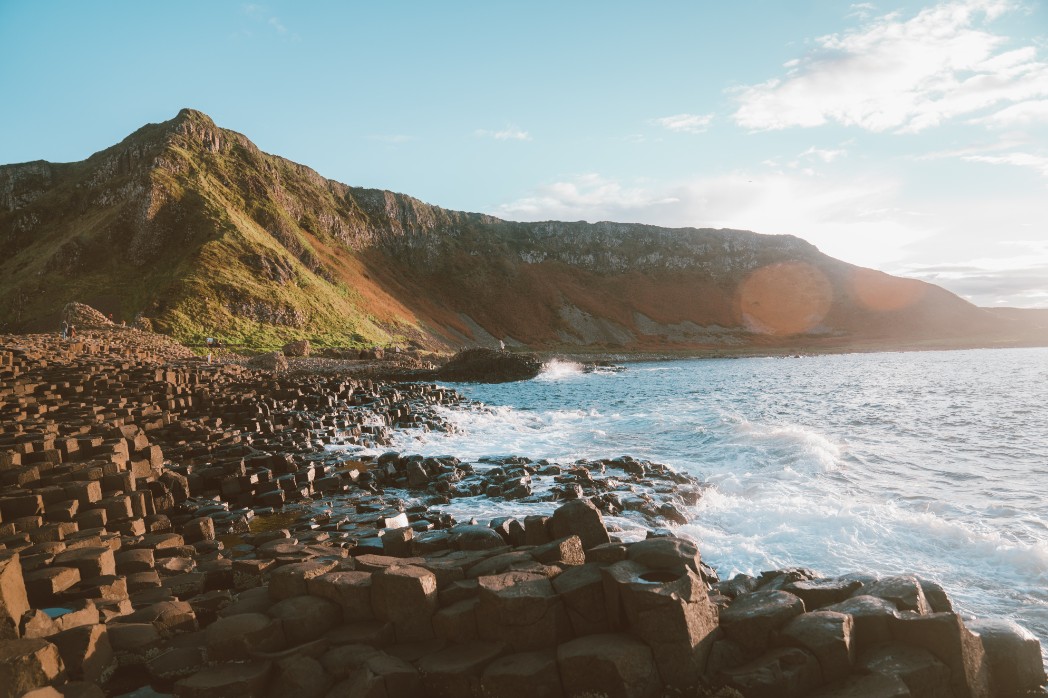
8. The name of Giant’s Causeway has its roots in ancient Irish folklore.
In our opinion, many of the coolest Giant’s Causeway facts revolve around its legends. There are many legends surrounding Giant’s Causeway. That said, the most popular ones revolve around a giant named Finn MacCumhaill (also spelled Fin McCool or Fionn Mac Cumhaill).
Some stories say that these basalt columns came to be just when Finn MacCumhaill walked around, thanks to his giant size. Other legends take things a step further.
One story puts Irish giant Finn MacCumhaill at odds with the Scottish giant Benandonner. According to this legend, Finn was worried that Benandonner was going to attack Ireland! So Finn ripped out pieces of the Antrim Coast to build a bridge to Scotland. (Today, the other side of this bridge is another set of beautiful basalt columns in Scotland, known as Staffa and Fingal’s Cave.) Then, Finn wanted to duel Benandonner on this bridge in order to save Ireland!
Unfortunately, Finn failed to consider Benandonner’s size when planning this duel. As a matter of fact, Benandonner was WAY bigger and stronger than Finn. So instead of going forward with his planned duel, Finn decided to play to his strengths.
Rather than using his strength and size, Finn opted to use his cunning. In order to put his plan into action, Finn needed his wife’s help. Together, the two of them crafted a plan that would trick even the smartest of giants.
Finn’s wife dressed Finn as a baby and put him in a crib for Benandonner to find. And when the Scottish giant saw the baby, he was scared for his life! After all, if the baby was that large, Benandonner could only imagine how massive Finn was! So Benandonner ran all the way back home to Scotland. And to make sure that Finn didn’t follow him, Benandonner ripped apart the bridge! Now, all that is left are the two ends of the massive basalt column bridge.
In another (less popular) version of this Irish legend, Finn and Benandonner weren’t enemies. They were friends! They simply wanted to build a bridge between their respective homes of Northern Ireland and Scotland.
9. Fingal’s Cave was formed at the same time as Giant’s Causeway.
There is a sprinkle of truth in the legends of Giant’s Causeway. It’s true that both Fingal’s Cave and Giant’s Causeway were created at the same time. That said, they were created by lava, not by giants.
10. Giant’s Causeway has loads of fun nicknames.
Giant’s Causeway has just two official names: Giant’s Causeway and it’s Irish name: Clochán an Aifir. But in addition to these two official names, this distinctive landscape has loads of nicknames, including the honeycomb, the eyes of the giants, the chimneys, the organ pipes, the giant’s gate, the giant’s boot, the harp, and the camel’s humps.
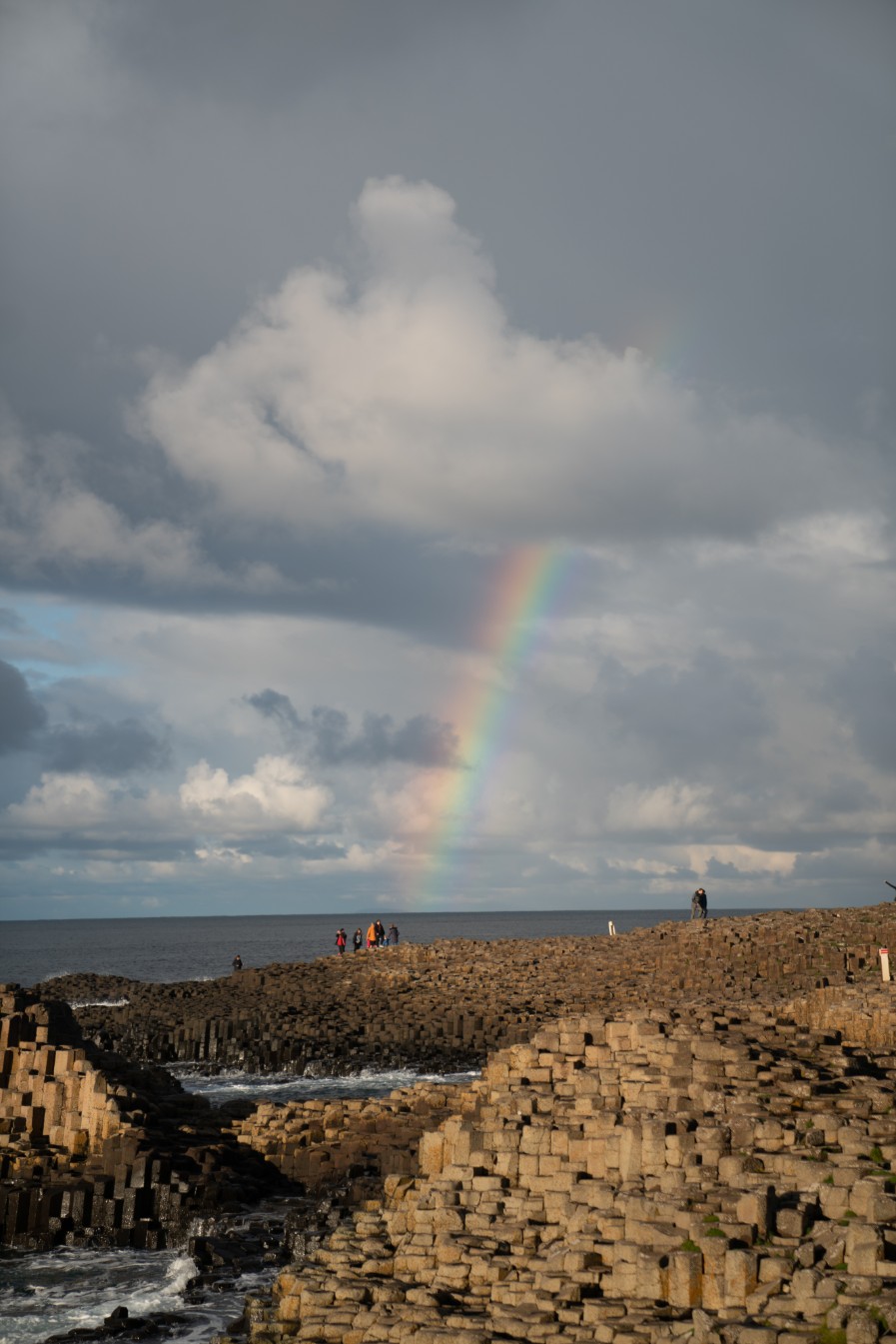
11. Giant’s Causeway was first “discovered” by a bishop in 1692.
After the British conquered the island of Ireland, the Bishop of Derry “discovered” Giant’s Causeway. (Of course, the original inhabitants of Ireland likely knew about Giant’s Causeway first, but we have no idea when they truly discovered it.)
12. It was first documented in 1693.
Despite the fact that the Bishop of Derry was the first to announce his discovery, he actually wasn’t the first person to write about Giant’s Causeway. That honor goes to a man named Richard Buckley, a fellow at Trinity College. Richard Buckley’s paper on Giant’s Causeway helped to share this natural wonder with the rest of the world.
13. Many shipwrecks have happened near Giant’s Causeway.
In 1588, the most famous Giant’s Causeway shipwreck occurred. La Girona, a boat in the Spanish armada, sank off the coast of Giant’s Causeway. Sadly, nearly 1300 people died during this tragedy.
14. It is consistently believed to be one of the greatest natural wonders in the United Kingdom.
It’s often listed alongside other stunning landscapes, including the Jurassic Coast, Fingal’s Cave, the Seven Sisters Chalk Cliffs, and the Lake District.

15. It was made a UNESCO World Heritage Site in 1986.
Giant’s Causeway was deemed to be “a spectacular area of global geological importance.”
16. In addition to looking cool, Giant’s Causeway is also a national nature preserve.
As a matter of fact, Giant’s Causeway is home to 200 species of plants and 50 species of birds. These include sea spleenwort, sea fescue, frog orchids, cormorants, redshanks, fulmars, and eiders.
There are even a few other gems that don’t fall into the “plant” or “bird” categories, like starfish, sea anemones, and limpets. In other words, Giant’s Causeway is a haven for all sorts of plants and animals!
17. Giant’s Causeway may be the most famous example of basalt lava flow in the world.
Other famous examples include Stuðlagil Canyon in Iceland, Devils Postpile National Monument in the United States, and the Basaltic Columns of Santa María Regala in Mexico. That said, there are many basalt columns all around the world – from Chile to New Zealand to Japan. There are even examples of basalt columns on Mars!
18. Led Zeppelin’s Houses of the Holy album cover was photographed on Giant’s Causeway.
Of course, there was some editing of the album cover after the fact. There were actually only two people in the photo, but eleven are shown on the album cover. And obviously, neither of these people naturally had purple skin. But the basalt columns are mostly the same!
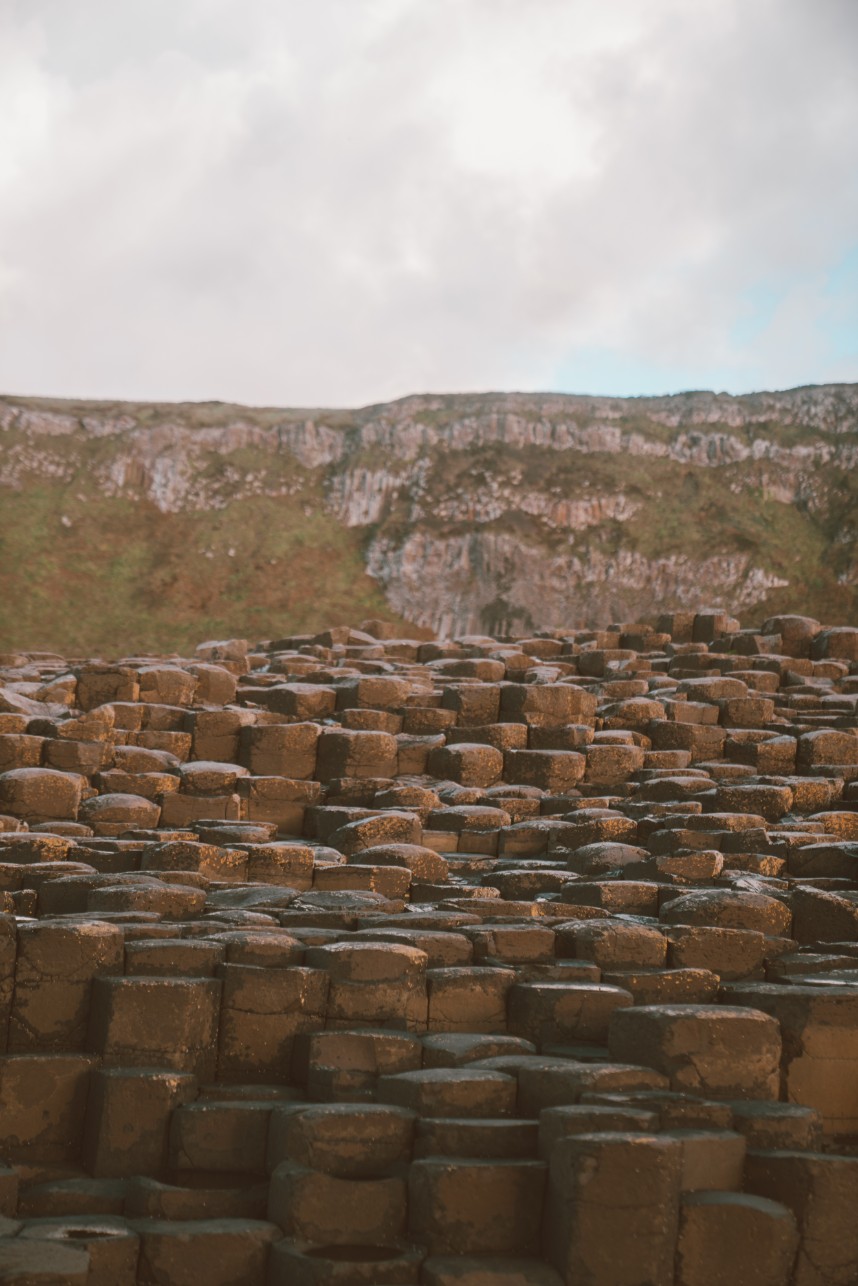
19. You can hike a trail known as the Shepherd’s Steps through Giant’s Causeway
Most visitors to Giant’s Causeway show up, gape in awe, hop around from one basalt column to another, and take dozens of pictures. And while that’s all good and well, one of the best ways to experience the beauty of Giant’s Causeway is by hiking the trail known as the Shepherd’s Steps.
The Shepherd’s Steps, also known as the Red Trail, is an incredible moderate hike. There are a few different options on this route, so it can take anywhere from 30 minutes to 90 minutes and be 1.2 kilometres to 3.2 kilometres. Regardless of which route you take though, you’ll get to see spectacular views of Giant’s Causeway.
If you’re looking for other Giant’s Causeway hikes, there are also the Yellow, Blue, and Green Trails.
20. One million people visit Giant’s Causeway every year.
Will you be one of them? Have all of these cool Giant’s Causeway facts made you add this natural wonder to your bucket list?
I don’t know about you, but all of these cool Giant’s Causeway facts just make us want to visit again! If you decide to go, let us know about your visit in the comments!

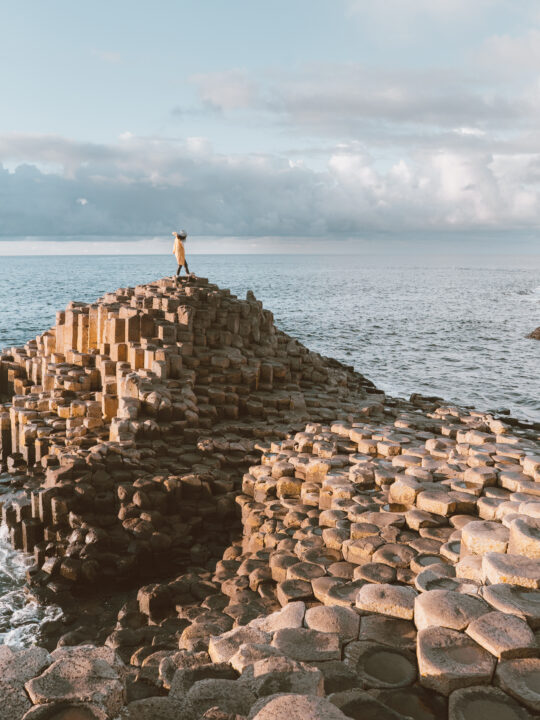
Create Account
Monday 24th of April 2023
Your point of view caught my eye and was very interesting. Thanks. I have a question for you.